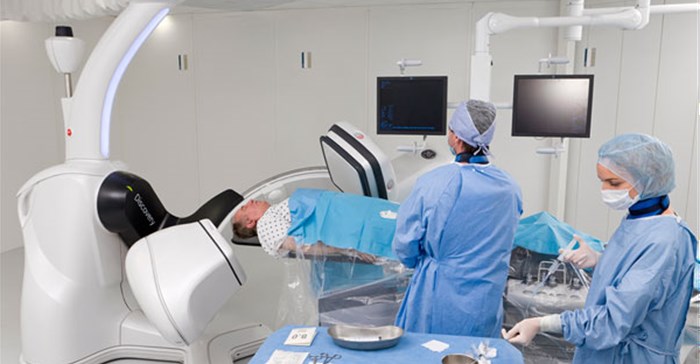
Top stories






ICTThe new fundamentals: What employees expect from IT support in 2026
Oscar Modiba, BET Software 1 day
More news




















Cardiologists at the hospital have welcomed the upgrading, which will assist them to further improve safety and medical outcomes for cardiovascular patients.

“The facility, which has been completely revamped, is now equipped with a state-of-the-art GE Healthcare Discovery IGS 730,” says Dr Farouk Mamdoo, an interventional cardiologist who practises at Netcare Union Hospital. “It is the first time that this cutting edge system has been introduced in a hospital in South Africa.”
According to Mamdoo, the new system has many advantages over older technologies, including improved image quality and reduced radiation doses.
“The system’s software enables doctors to receive other kinds of images, such as CT and sonar scans, and data directly from the hospital’s radiology department, and we can then overlay these with our angiogram images.
“This important feature provides us with a completely integrated high-definition picture of the patient’s cardiovascular system, which we use to guide our procedures even more accurately than before,” he explains.
Interventional cardiologist, Dr Chris Zambakides, who together with Mamdoo, runs a percutaneous heart repair unit at the hospital agrees that the new technology was an important advance for the hospital and heart medicine in the southern Johannesburg region.
“One of the most important advantages of the new technology is that images of excellent quality can now be achieved at lower radiation doses, especially as percutaneous procedures in complex cardiovascular cases are highly intricate and take many hours to complete,” says Zambakides.
“This means that when we undertake these procedures we are not only able to capture more images, but also no longer have to take a break mid-way through in order to keep radiation doses at safe levels. These procedures then are safer for all involved and can be completed more quickly. Indeed, we will be able to reduce the time it takes to complete them by some 25%.”
The first procedure was recently completed after the interventional cardiac team received training and became completely familiar in the use of the new system. “The procedure was a tremendous success and the patient was able to return home just a couple of days after it was completed,” he says.
“We performed a percutaneous rotational rotablation [endarterectomy], in which a tiny drill, powered by compressed air and special fluid are used to clear calcified deposits blocking an artery, as well as a simultaneous coronary intervention to chronic total occlusion [CTO] to re-canalise a chronically blocked portion of an artery.”
Dr Jean-Paul Theron, another cardiologist at Netcare Union Hospital, says that the upgrade will enable interventional cardiologists and vascular surgeons to perform procedures with greater ease and safety.
He points out that, unlike most other interventional imaging systems, the new Discovery IGS technology’s C-arm is not permanently floor- or ceiling-mounted, but, unusually, has a fully mobile C-arm.
“The C-arm is mounted on an advanced guided vehicle and laser technology is used to accurately guide it to the appropriate position anywhere over the patient to acquire the best possible three-dimensional images. The C-arm can be moved out of the way when it is not in use. In addition, this system makes it easier for us to capture images of our larger patients,” Theron says.